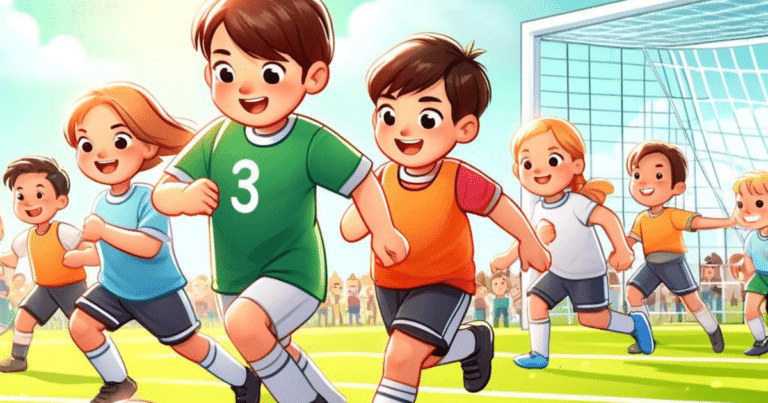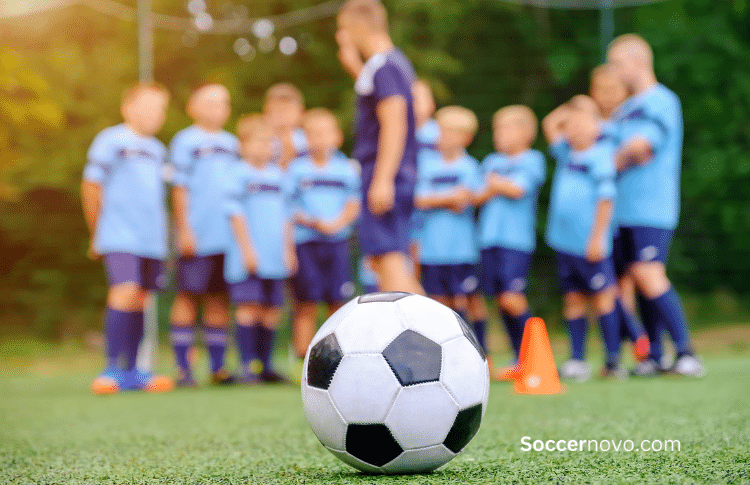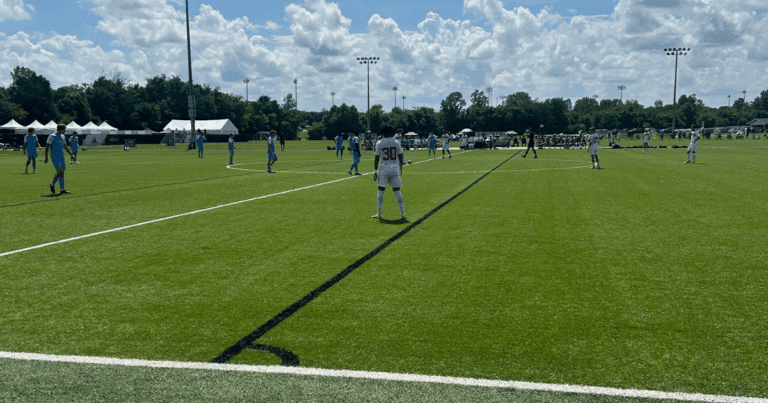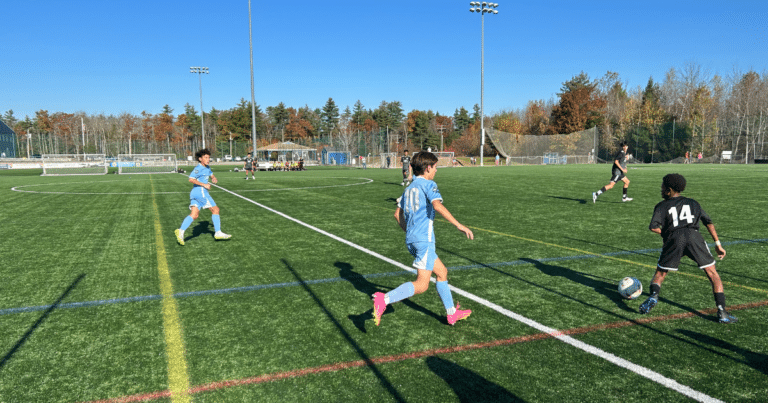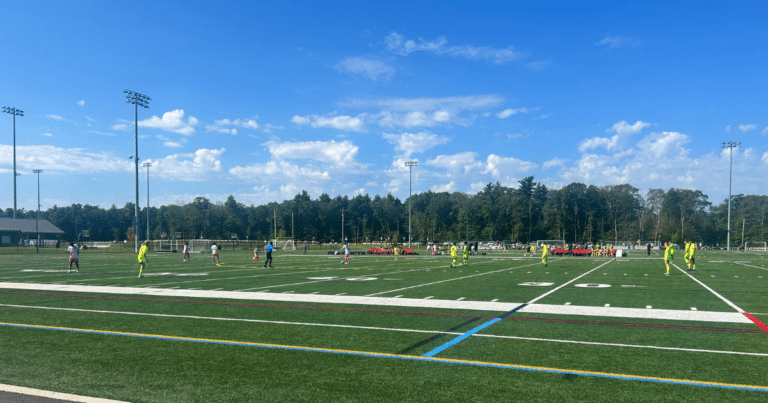Indoor Soccer Positions
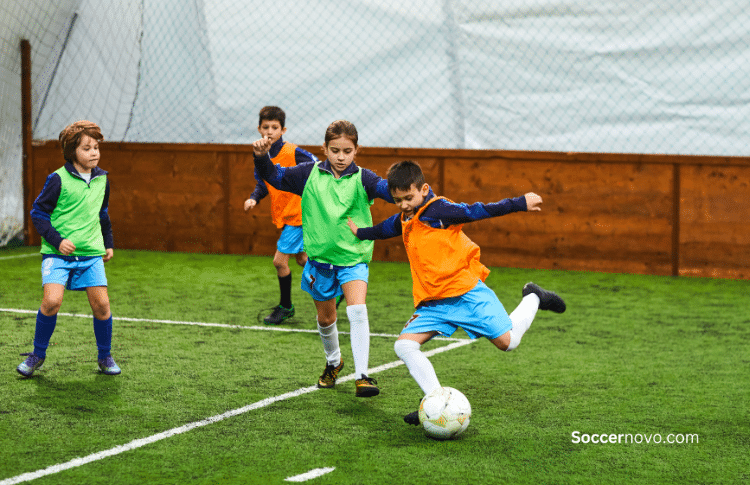
Indoor soccer is a variant of outdoor soccer played in an enclosed space. Each team has between five and seven players, and games are often played on artificial grass or turf.
 Some other forms of soccer, such as futsal and five-a-side, are also played indoors, but they are not to be mistaken for indoor soccer.
Some other forms of soccer, such as futsal and five-a-side, are also played indoors, but they are not to be mistaken for indoor soccer.
Indoor soccer, in contrast to futsal, is not a FIFA-sanctioned sport. Instead, there are other variations played across the world, each with its own set of rules, roster limits, and regulating body.
Each region has its own rules and leagues because there is no central authority.
In this article, I’ll address the indoor soccer positions, formations and strategies.
Basic Indoor Soccer Positioning
Indoor soccer positions may be broken down into two categories: attackers and defenders.
- The primary roles of offensive players are to score goals and open up scoring chances for their teammates.
- Players on defense are responsible for halting the other team’s offensive flow and forcing the opposition’s attackers to work harder to score.
There are also forward, midfield, and defensive roles in indoor soccer.
- The forward is in the most offensive position and requires the highest level of ball mastery.
- The midfielder is a player who plays in the middle of the field and is responsible for carrying out more actions than a defender or forward.
- The back line is guarded by the sweeper or the goalie, who blocks any shots on goal from the other team.
Indoor soccer, in contrast to its more static outdoor counterpart, has frequent position changes and substitutions. At the youth-level, it’s very possible you’ll begin as an attacker, but you’ll soon find yourself defending.
The ability to score is just as crucial for a defense as it is for an attacker to know how to keep the ball out of the net.
As a youth coach, it’s important to emphasize teaching strategies rather than positions. In some cases, allow the team to make their own decisions on where to go instead of forcing them into a rigid pattern.
Be sure that your strategy fits in with your overall plan for the season.
The Best Indoor Soccer Formations
2-3-1
The most traditional 7v7 setup is the 2-3-1. It’s a great way to maintain harmony on the field, and it’s simple enough that even young players can pick it up quickly.
If you have two defenders and three hardworking midfielders, you’ll have enough support at the back without having to commit too many players to defense.
Concurrently, the midfield has the ability to advance the ball, while the attack benefits from the breadth provided by the wide players. Central midfielders who can switch between the 6 and 10 positions provide the best of both worlds for a lone striker. It is quite easy to score goals with this formation, and it is also very efficient defensively against the formations I will outline below.
2-1-2-1
2-1-2-1 is a variation on the standard 2-3-1 formation in which the center midfielder drops back a bit, and the wingers push higher.
The most notable advantage of this formation is its ability to be both offensively focused and defensively sound. A center midfielder who can cover a lot of ground and the proper players make this formation a threat to any opponent.
The transition from the 5v5 game is facilitated by 2-1-2-1 because players are more aware of their primary role as either an attacker or defender.
3-1-2
The 3-1-2 is a great defensive formation for coaches to use. The formation’s three-player defensive basis and overall balance make it ideal for scaling up to 9v9 and 11v11 games.
Playing with a 3-player defense and 2-player attack allows for a great deal of tactical freedom and positional mobility, both of which are common among younger players, despite the center midfielder’s apparent isolation on paper.
Defenders can be given permission to move into wide areas to help, and forwards can be taught that they must do more than just score goals.
3-1-1-1
The 3-1-1-1 is an excellent formation to transition to when defending a lead or trying to hang on, but it can also give stronger midfield support for teams that prefer to play with a back three than the 3-1-2, making it one of the greatest formations for teaching 7v7 players the tactics of the game.
This formation works well when you have players that can easily fill those designated roles or when you have a severe deficiency of wide midfielders. Due to the formation’s narrowness, it may be more important to maintain possession in the midfield and defensive midfield zones.
However, this tactic may also be used to elevate the wing-backs’ status to that of the game’s most vital players.
3-2-1
The 3-2-1 is a common formation for teams that want to play defense rather than offense. Using this formation, teams may field a strong defensive backline of three players without giving up too much influence in the midfield.
In contrast to the depictions of the 3-1-2 and the 3-1-1-1, the central defender in this layout is placed higher than the two fullbacks. With no “central midfielder” in this set-up, it is incumbent upon the central defender to fill in there as necessary.
Therefore, there are situations when the 3-2-1 looks like the 2-1-2-1. The central defender in the 3-2-1 is typically a libero or ball-playing center-back. In contrast, in the 2-1-2-1, it is typically a midfield whose job is to win the ball and get it to the team’s more dangerous attackers.
Indoor Soccer Strategies
Keeping your mind focused is the key to success in a fast-paced game like indoor soccer. Here are some basic strategies to help players succeed in indoor soccer.
1. Reduce the pass-back
Most players are accustomed to passing the ball frequently backwards when playing traditional 11-on-11 soccer. Players in indoor soccer need to be aware of the shorter pitch length.
Due to the drastically reduced playing area, giving the ball back immediately switches your team from attack to defense. Waiting for teammates to get to the offensive side of the field before passing the ball is a good tactic to use in indoor soccer.
2. Play the ball low
The speed of the ball in indoor soccer matches is substantially higher than in outdoor soccer. Because of this, it also bounces higher. This is why it’s important to keep the ball low when passing it and to impart topspin to the ball to increase the pass’s accuracy.
3. The attacker is always on the other team’s side
Always keep in mind that the offside rule does not apply in indoor soccer. This is why the attacker should spend much of the game in the attacking half, looking for a counterattack opportunity. This doesn’t mean, though, that they shouldn’t help defend when they need to.
4. Have reliable substitutes
Indoor soccer, as has been said several times throughout this article, is a game that is played quickly. As a result of the nonstop running required, most players are unable to complete the entire game at their peak performance level. Here’s where your bench comes in; if you want to keep the game going at full speed (or even increase it), you need to bring in players who are ready at a moment’s notice.
5. Avoid shouting your teammates’ names when asking for the ball
Indoor soccer gets loud. In many arenas, there are multiple games going on at once. Shouting for your teammate’s to give you the ball can cause more confusion.
You should instead settle on a signal in advance of the game. In most situations, simply raising your hand is enough to boost your team’s efficiency and decrease the likelihood that the opposing team will figure out what you’re up to.
6. Do not directly pass the ball
Passing the ball directly into a teammate’s feet is never a good idea, especially in a fast-paced game like indoor soccer.
Instead, players should get in the habit of passing to open areas of the field where their teammates have the best chance of securing the ball.
7. Don’t keep the ball in your possession for too long
Everyone on the pitch, including the goalie, must keep the ball moving in order to succeed. If the soccer field is small, it’s not a good idea to hold on to the ball for too long since the other team may quickly close the distance.
Goalkeepers need to be ready to initiate a counterattack as soon as possible after making a save.
Conclusion
For many players especially in the northern parts of the United States, indoor soccer is a great way to continue playing soccer during the harsh winter months.
Additionally, indoor soccer helps players get involved in more plays and requires them to make quicker decisions. For example, in a 11v11 setting, soccer players are able to hold the ball at least a few seconds before a player is close by. However, in indoor soccer, a player will be closing out as soon as the ball is trapped.
We highly recommend players give indoor soccer a chance during the winter to keep them in shape and sharp in preparation for the spring season!

Written By: SoccerNovo
SoccerNovo is an independent youth soccer media brand built to help parents, players, and coaches better understand the game and the pathways available in U.S. soccer. Our mission is to make youth soccer simpler, clearer, and more accessible for everyone involved in it.
Let’s connect


